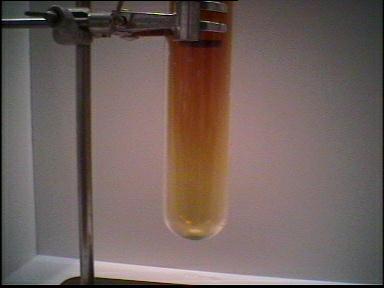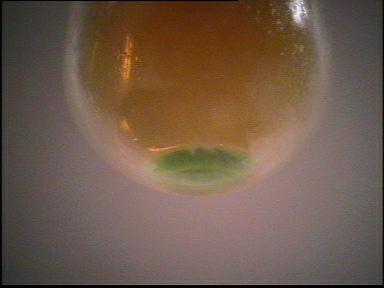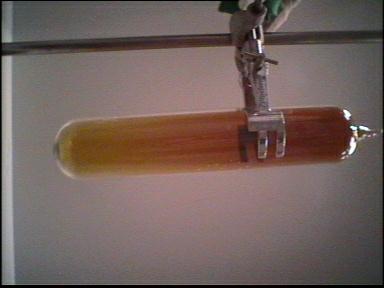



| 1. |  |
2. |  |
| Experimental setup | |||
| 3. |  |
4. |  |
| Liquid N2O4 |
| Photo1: | Experimental setup: A closed glass ampoule contains nitrogen dioxide (brown). The top is covered with a heating mantel, while the bottom is placed in an ice bath. |
| Photo2: | Colorless N2O4 collects in the lower area of the ampoule. |
| Photo3: | A blue liquid condenses at the bottom of the ampoule. This is a mixture of N2O4 and NO2, which changes into a blue solid (N2O3) after further cooling. |
| Photo4: | We can easily identify the equilibrium situation using color: left, colorless N2O4; right, red-brown NO2. |
2 NO2 ® N2O4 DH = -57 kJ/mol
As the formation of N2O4 is an exothermic reaction,
it is more likely to occur in the cool areas of the ampoule. (Where the
system yields to the outer influence to become cold, the exothermic reaction
has the upper hand.) Accordingly, brown NO2, whose reaction
of formation is endothermic, is produced primarily in the warm parts of
the ampoule.